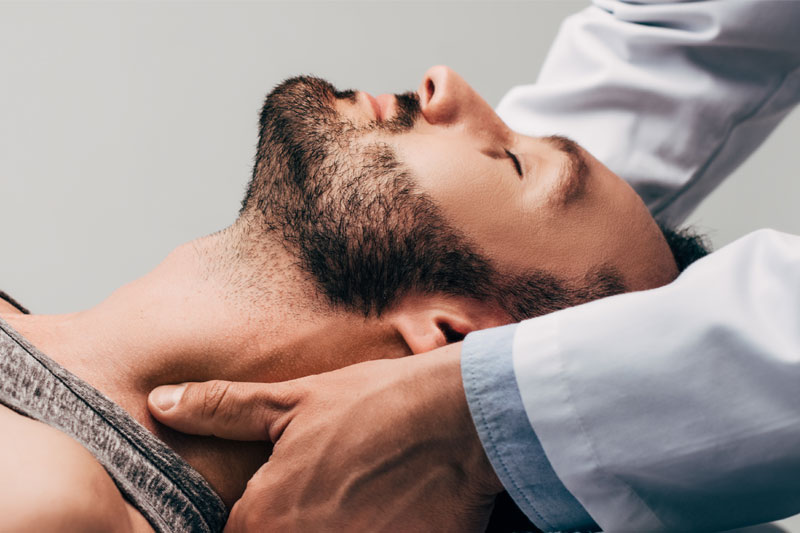During National Spinal Health Week (20th-26th May 2024) We Champion a Healthier Future for Sufferers of Back Pain
With more than 6.1 million Australians suffering from musculoskeletal disorders including debilitating back pain, National Spinal Health Week (20th-26th May 2024), an initiative of the Australian Chiropractors Association (ACA), is dedicated to improving the spinal health of all Australians through increasing awareness of Musculoskeletal Disorders (MSDs) including Low Back Pain (LBP) which currently costs the Australian economy over $55.1 billion annually.
Four in every five Australians experience back pain at some point in their lives, usually as a result of MSDs which account for the greatest proportion of persistent pain conditions and the second largest contributor to disability worldwide; with low back pain the single leading cause of disability globally in both men and women.
Dr Michael Black of Michael & David Black Chiropractic Group, a member of the ACA said, “Back pain is usually as a result of a musculoskeletal disorder (MSD) which accounts for the greatest proportion of persistent pain conditions and is the second largest contributor to disability worldwide, with low back pain being the single leading cause of disability globally.
“For about 8 in 10 sufferers experiencing persistent symptoms beyond three months, the pain is often not caused by any particular condition. Known as ‘Chronic Primary Low Back Pain’ (CPLBP) or non-specific low back pain, it’s classified as a non-sinister, non-pathological cause with over 90% of back pain due to CPLBP.
“For people who experience chronic back pain, their ability to participate in family, social, and work activities is often limited, leading to negative impacts on both physical and mental health with significant costs to families, communities and Australia’s economy,” said Dr Michael Black.
According to the new World Health Organisation (WHO) guideline for non-surgical management of chronic primary low back pain in adults in primary and community care settings (Dec 2023), LBP is a very common condition which the WHO has labelled a global public health issue. The guideline written by a world-wide range of leading musculoskeletal health practitioners provides evidence-based recommendations on holistic non-surgical interventions including chiropractic treatments.
Dr David Cahill, President of the ACA, welcomed the WHO’s first guideline aimed at addressing LBP and chronic LBP in adults, including older people, with results from the in-depth global research recommending non-surgical interventions be a fully integrated, drug-free, person-centred approach, such as chiropractic healthcare, to improve health and wellbeing outcomes for LBP sufferers.
“With its findings focussed on individualised holistic healthcare, the WHO’s research aligns with the heart of ACA’s chiropractic philosophy – that patient education and self-care strategies, tailored exercise programs and physical therapies including chiropractic spinal manipulative therapy, and massage; can provide effective, evidence-based holistic drug-free solutions for back pain sufferers,” he said.
“And although the WHO research determined that in some cases, non-steroidal anti-inflammatory medications may assist sufferers in some instances in the short-term; in line with the University of Sydney’s study (Lancet medical journal, 23 June 2023), the WHO recommends against the commonly prescribed use of opioids and paracetamol to treat LBP as these medications have proven largely ineffective and come with a range of significant associated risks and side effects,” Dr Cahill said.
Of the millions of Australians already impacted by MSDs including LBP, 58% are of working age in their peak income earning years (25-64), with physical workers the highest percentage of Australians at risk of back pain and injury.
With physical work typically involving strenuous activities that can strain the spine, muscles, ligaments and joints; lifting, repetitive actions such as bending, squatting or standing for extended periods can lead to musculoskeletal injuries which, if left untreated, can lead to a chronic pain condition or disability.
Older Australians are also at high-risk, particularly those over 65 years as they’re more likely to develop chronic LBP which can restrict activities and limit their overall enjoyment of life with devastating consequences including loss of physical and mental capacity and restricted mobility which limits participation in society with psychosocial impacts. Inactive Australians who don’t exercise and spend long hours sitting at work or at home are also at risk of developing poor posture, weight gain and a range of associated musculoskeletal problems that can impact their quality of life and overall health and wellbeing.
With the annual cost of MSDs to the Australian economy exceeding $55.1 billion through direct health costs, lost productivity and reduced quality of life, and with the growth in musculoskeletal cases projected to be 43% over the next two decades (including older Australians living with spinal health conditions), the health burden on Australians and our economy is and will continue to be significant,” Dr Cahill said.
As a leader in musculoskeletal health, ACA has invested over $2.2 million to advance research in building evidence-based practice for chiropractic healthcare and promotes the importance of maintaining spinal health through its annual flagship campaign, National Spinal Health Week – Australia’s longest running (over 25 years), award-winning health awareness campaign dedicated to improving the spinal health of Australians of all ages.
“When it comes to treating most back pain, best practice starts by avoiding prescribed and over-the counter medications and instead, accessing person-centred, low risk, non-surgical, drug-free therapies that can treat the underlying cause not just the symptoms while providing self-care preventative measures essential in delivering holistic patient care,” Dr Cahill said.
“Every week 400,000 chiropractic healthcare consultations are helping to create well-adjusted Australians. With so many seeking holistic chiropractic healthcare every week, ACA chiropractors continue to play an important role in improving the spinal health of everyday Australians,” said Dr Cahill.

